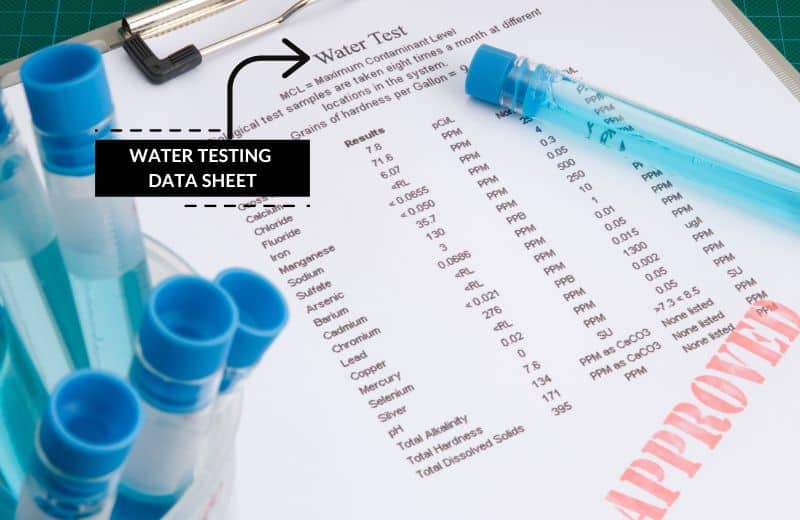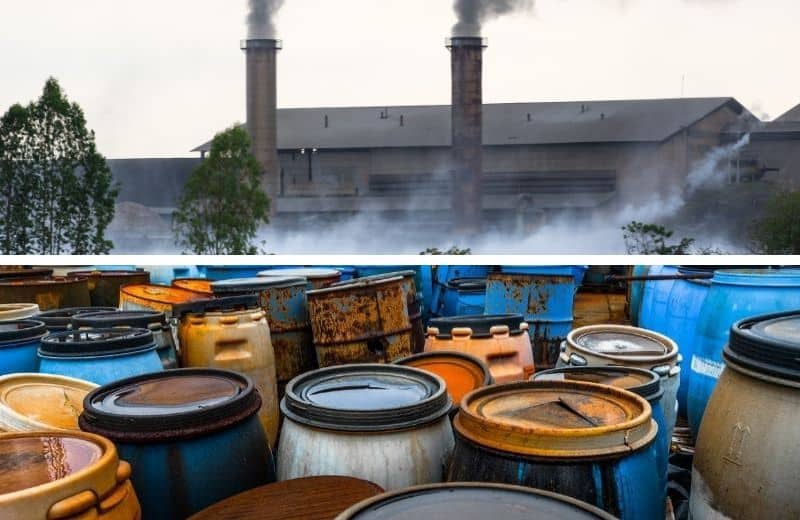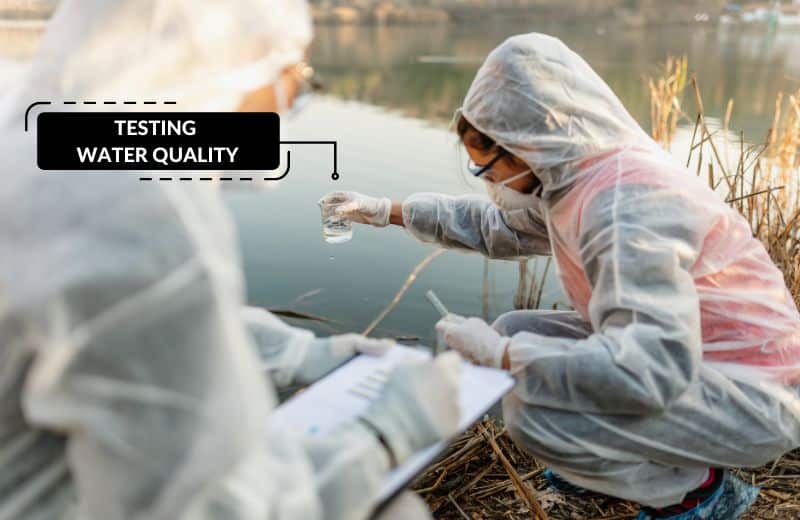Is the tap water safe to drink in Orlando? How is the water quality in Orlando, Florida? Are there any contaminants in Orlando’s drinking water that exceed local, state, or federal standards?
Find out the answers to these questions and more in this Orlando tap water safety and quality guide.
📌 Key Takeaways:
- The drinking water in Orlando, Florida is considered generally safe to drink.
- The City of Orlando water contains 16 contaminants, but these contaminants are present in trace amounts that don’t exceed EPA maximum allowances.
- Some residents may find that Orlando tap water has an eggy smell or a metallic taste due to its sulfur content, but this doesn’t affect its safety.
- The 3 contaminants present in the largest quantities in Orlando’s drinking water are 1,3-butadiene, hexavalent chromium, and disinfection byproducts.
Table of Contents
- 🚰 Can You Drink Orlando Tap Water?
- 🗺️ Where Does the Tap Water in Orlando Come From?
- 📉 Who Regulates Orlando Drinking Water?
- 🧪 Orlando Annual Water Quality Report
- ☣️ Contaminants Found Above Guidelines in Tap Water in Orlando
- 🧫 Main Contaminants Found in Orlando Tap Water
- ⛲ Orlando Drinking Water in Public Places
- 💬 Frequently Asked Questions
🚰 Can You Drink Orlando Tap Water?
Yes, you can drink the tap water in Orlando, Florida because the Orlando Utilities Commission (which provides the City’s drinking water) provides water treatment that complies with EPA guidelines.
The Environmental Protection Agency enforces water utilities to reduce their drinking water contaminants to within its maximum allowances, known as Maximum Contaminant Levels (MCLs). The trace contaminants in Orlando drinking water are detected at concentrations below the EPA MCLs, so the water is considered legally safe to drink.
Additionally, the most recent EPA ECHO database for the University of Central Florida found no health-based violations of the Safe Drinking Water Act (SDWA) from April 30, 2019 to June 30, 2022. The City had just 1 non-health-based violation (for monitoring total coliform) that was resolved in January 2021.
So, from a legal standpoint, Orlando tap water is safe to drink.
However, there are still trace contaminants in the water supplied to Orlando, FL, and organizations like the Environmental Working Group (EWG) believe that the EPA MCLs for these contaminants are too lenient.
The EWG has produced its own Health Guidelines for contaminants regulated by the EPA – and some that aren’t regulated at all – based on research into their potential health effects.
The EWG’s Health Guidelines are much more stringent, but they’re not legally enforceable, so water utilities don’t have to consider them at all when treating their water supplies.
The Tap Water Database for Orlando Utilities Commission highlights 16 total contaminants detected in Orlando drinking water, 5 of which exceeded EWG Health Guidelines. We’ve looked in more detail at these contaminants later.

What else should we consider when looking at Orlando’s tap water safety?
Lead is a major contaminant worth mentioning. Thousands of water distribution systems in the US contain lead pipes, which may leach trace amounts of this toxic metal into drinking tap water.
Luckily, we couldn’t find any evidence to suggest that lead is a problem in Orlando’s municipal water supply. The City doesn’t use lead service lines and implements corrosion control practices to prevent leaching from its distribution system. However, the Orlando Utilities Commission noted that old homes or businesses with lead in their own private plumbing systems might have “higher than normal” levels of lead or copper in their water.
If you have any reason to be concerned about lead in your water, we highly recommend conducting a lead water test and taking action if necessary.
👨🔧 Extra reading: Is it safe to drink Florida tap water?
🗺️ Where Does the Tap Water in Orlando Come From?
Most of the tap water in Orlando, Florida is sourced from a local underground aquifer: the Floridan Aquifer. Located 800 to 1,000 feet beneath the ground, the Floridan Aquifer is protected by a thick layer of clay. Water is pumped from the aquifer from more than 130 wells.
Groundwater sources like the Floridan Aquifer have one major advantage: they’re better protected against pollution and contamination compared to surface water (above-ground) water supplies. The water in underground aquifers is often cleaner than river or lake water because the layers of rocks and soils gradually filter the water as it seeps into the aquifer.
However, there are a few contaminants that are mostly unique to groundwater supplies, including sulfur, which gives water an unpleasant eggy taste and smell.
Once collected at the source, water is distributed to one of the seven water treatment plants operated by the Orlando Utilities Commission.
Here, water is treated to remove contaminants and improve water quality with ozone disinfection. Most water treatment processes that are used for surface water, such as sedimentation and filtration, aren’t required for OUC water because of the few impurities present. The City’s water is, however, synthetically fluoridated, and sodium hydroxide is added to the water to reduce its corrosive abilities and prevent copper and lead leaching in affected plumbing.
The treated water is then delivered to homes and businesses in Orlando to meet demand.

📉 Who Regulates Orlando Drinking Water?
The City of Orlando drinking water is managed by Orlando Utilities Commission (OUC)* and regulated by the Environmental Protection Agency (EPA) and the City’s Department of Environmental Protection (DEP).
*Note: some parts of Orlando are served by the University of Central Florida and the Orange County Utilities Department (OCUD) – East. Orlando Utilities Commission serves the largest population in the City, so we’ve focused on this utility in this guide. Contact your local authority if you’re not sure who provides your water.
The EPA has produced National Primary Drinking Water Regulations, which ensure drinking water safety by enforcing water utilities to reduce contaminants down to levels that are deemed to be safe in water, called Maximum Contaminant Levels (MCLs).
The Orlando Utilities Commission operates its own testing lab, where it conducts 20,000 tests per year to ensure that state and federal regulations are met. The utility tests for more than 135 contaminants – both regulated and unregulated – and shares its findings in the OUC annual Water Quality Report (more on this below).
Florida Department of Environmental Protection enforces the SDWA and oversees the OUC, ensuring that its treated water quality is legally acceptable.
🧪 Orlando Annual Water Quality Report
The most recent annual Water Quality Report for the Orlando Utilities Commission is the 2021 Report dating from January to December.
Remember, we’re focusing on the water delivered by the OUC in this guide. We’ve shared links to the Reports for the other utilities in the City below:
In the Report, you can find information on the City’s water source, how Orlando’s water is conserved and protected, the treatment methods used at the utility’s seven water treatment plants, and the contaminants present in the treated water (and how these compare to EPA legal limits).
According to the Report, none of the trace contaminants detected in Orlando tap water are present in quantities exceeding EPA MCLs. However, that doesn’t mean there are no contaminants present whatsoever.
For instance, a concerning 0.99 MFL (million fibers per liter) of asbestos was reported in Orlando water, which is within the EPA’s MCL of 7 MFL – but you probably don’t want to drink even trace amounts of this cancer-causing contaminant.
The full list of impurities in the Orlando Consumer Confidence Report is:
- Barium
- Fluoride
- Nitrate
- Selenium
- Sodium
- Asbestos
- Bromate
- Chlorine
- Haloacetic acids
- Total trihalomethanes
- Copper
- Lead
We recommend reading the Report thoroughly and researching the contaminants present in your water supply. Most at-home water filters can greatly reduce or remove these contaminants.
You can also compare the most recent Report to Reports dating all the way back to 2005 (available on the OUC website) to see how the City’s water quality has changed, for better or for worse.

☣️ Contaminants Found Above Guidelines in Tap Water in Orlando
Thankfully, because it’s sourced from a deep aquifer that undergoes a natural filtering process, Orlando’s drinking water doesn’t contain many trace contaminants at all, and none of these exceed the legal limit.
However, a handful of contaminants in the City’s tap water still exceed the Environmental Working Group Health Guidelines:
1,3-Butadiene
1,3-Butadiene is a type of volatile organic compound that has several negative health effects, including an increased risk of cancer. 0.0229 PPB (parts per billion) of this contaminant was detected in Orlando drinking water – that’s 2.2X the EWG Health Guideline of 0.0103 PPB. There is currently no legal limit for this contaminant in community water systems.
Haloacetic acids (HAA5)† and Haloacetic acids (HAA9)†
Orlando’s drinking water is partially disinfected with chlorine, which results in the production of disinfection byproducts. Haloacetic acids are a type of disinfection byproduct with health effects including an increased risk of cancer. 19.2 PPB and 32.7 PPB of HAA5 and HAA9 were detected in Orlando tap water – between 192 and 544x the EWG’s Health Guidelines of 0.1 PPB and 0.06 PPB. HAA5 has an EPA MCL of 60 PPB, and HAA9 currently isn’t regulated.
Hexavalent Chromium (Chromium-6)
The most dangerous, cancer-causing form of chromium in water is chromium-6, or hexavalent chromium, which occurs naturally and may also leach into water from waste discharge and industrial pollution. 0.0456 PPB of chromium-6 was detected in Orlando drinking water – 2.3x the EWG’s Health Guideline of 0.02 PPB. The EPA only regulates total chromium (chromium-3 and -6 combined), not chromium-6 alone.

Total trihalomethanes (TTHMs)†
Water disinfected with chlorine often contains another disinfection byproduct: total trihalomethanes (TTHMs). Long-term exposure to large amounts of TTHMs may increase your risk of bladder and colon cancers and damage the kidneys and liver. 57.6 PPB of TTHMs were detected in Orlando drinking water – 384x the EWG’s Health Guideline of 0.15 PPB. The EPA MCL for this contaminant is 80 PPB.
The good news is that Orlando has much fewer issues with disinfection byproducts compared to other states, likely because its water source is naturally low in organic material, so there are fewer compounds for chlorine to react with.
If you’re concerned about any of these contaminants in your water, consider installing one of the many at-home filtered water systems that can remove chemicals and disinfection byproducts.
🧫 Main Contaminants Found in Orlando Tap Water
There are only a few other contaminants present in Orlando tap water, and none of these exceed EPA or EWG guidelines.
These include:
- 2-propen-1-ol – A polymer with ethenylbenzene that has uses in chemical manufacturing; not much is known about this contaminant’s short- or long-term health effects in drinking water.
- Barium – A non-toxic metal that occurs naturally in the environment and shouldn’t affect health in low levels; ingestion of large quantities may cause diarrhea, vomiting, nausea, and (in extremely high levels) death.
- Fluoride – A mineral that’s produced synthetically and added to Orlando’s tap water supply; is considered perfectly safe in low levels but is subject to controversy due to its potential health effects, including dental and skeletal fluorosis.
- Manganese – A trace mineral that, alongside calcium, causes water hardness effects including scale formation and soap scum; not harmful to health in low levels naturally found in water.
- Molybdenum – An essential trace mineral found in water and foods like milk, cheese, cereal, and legumes; low levels of this contaminant are healthy.
- Nitrate – A form of nitrogen that’s commonly used in fertilizers and explosives; even low levels may cause health problems including headaches, nausea, increased heart rate, and blue baby syndrome.
- Quinoline – A type of semi-volatile organic compound that’s used in the food and pharmaceutical industries; may cause dizziness, nausea, and vomiting if high exposure occurs.
- Selenium – A trace mineral that’s needed in small quantities in the human body; low levels of this mineral are healthy but long-term exposure to large concentrations may cause numbness and circulation problems, and hair and fingernail loss.
- Strontium – A contaminant found naturally in some minerals; the body may confuse this contaminant with calcium which could cause problems with bone structure if large quantities are ingested.
- Total chromium – Refers to chromium-6 (mentioned above) and chromium-3 (non-harmful), these being the two common types of chromium found in water.
- Vanadium – A non-toxic metal that’s naturally occurring and is found in vitamins, drinking water, and food; has no health effects in low levels.

⛲ Orlando Drinking Water in Public Places
It’s perfectly safe to drink the tap water in public places in Orlando because this water is on the same distribution system as the City’s private homes and businesses.
That means the public drinking water in hotels, bars, and restaurants is exactly the same as the water that comes out of your tap at home.
If you ask for free drinking water at a restaurant, you’ll usually be served it. Some restaurants may have policies that require you to pay for another drink to get access to free tap water.
Bars are the same – you’ll usually need to pay for a drink, and then you’ll be eligible to receive tap water for free.
Most hotels in Orlando, including the Disney properties, have safe drinking water. Lead may compromise tap water quality in some older hotels, so if you’re ever unsure, check with the hotel’s reception.
There aren’t many drinking water fountains in Orlando, so if you’re out and about, you may need to buy bottled water. All the popular bottled water brands are sold in supermarkets and grocery stores around the City.
💬 Frequently Asked Questions
Can you drink tap water in Disney World?
Yes, you can drink tap water in Disney World. Disney World gets its water from Orlando’s municipal water treatment, just like the rest of the homes and businesses in the City. So, the tap water in the hotels in Disney World is safe to drink, but, like all of Orlando’s water, may have an unpleasant sulfur (rotten egg) smell and taste. Most hotels and Disney parks have filtered drinking water fountains that you can use to fill your refillable mugs and bottles if you find the tap water taste unbearable.
How is the water quality in Orlando Florida?
The water quality in Orlando, Florida is good. The City’s water supply contains only a few trace contaminants because it’s sourced from the Floridian Aquifer, which is underground and protected from air pollution and runoff. The drinking water in Orlando meets EPA regulations under the SDWA, but it still has a rotten egg smell and taste due to its sulfur content.
Is Orlando water hard or soft?
Orlando water is hard, with an average calcium hardness of 129 PPM (parts per million). This puts Orlando in the “hard” water category (120-180 PPM of calcium hardness). You might notice hard water signs in your home, like limescale deposits in your bathroom and poor lather with soap, which can be remedied by buying a water softener.
Does Orlando water have lead?
There may be some homes in Orlando that have lead in their water due to the use of lead pipes in the distribution network and lead plumbing in old homes. However, there have been no reports documenting lead in Orlando’s water. Test your water for lead if you’re concerned.
Is it safe to drink sink water in Florida?
Yes, it’s safe to drink sink water in Florida as long as the sink is hooked up to the municipal water system and is designed to deliver drinking water (i.e. a kitchen sink). Some bathroom sinks have plumbing made from lead and other toxic metals, so it’s best to only drink kitchen sink water if you’re unsure.
Is Orlando drinking water fluoridated?
Yes, Orlando Utilities Commission fluoridates the City’s drinking water. The utility adds an average of 0.60 PPM (parts per million) of fluoride to the water to promote good dental health. Some people protest the use of fluoride in water due to its potential health effects, but it should be safe to drink in low levels.
Does Orlando’s tap water contain chlorine?
Yes, chlorine is occasionally used to disinfect water in Orlando. However, the most common disinfectant used in the seven water treatment plants operated by the Orlando Utilities Commission is ozone. Ozone, being a very strong disinfectant, reduces the amount of chlorine that needs to be added to the water.

